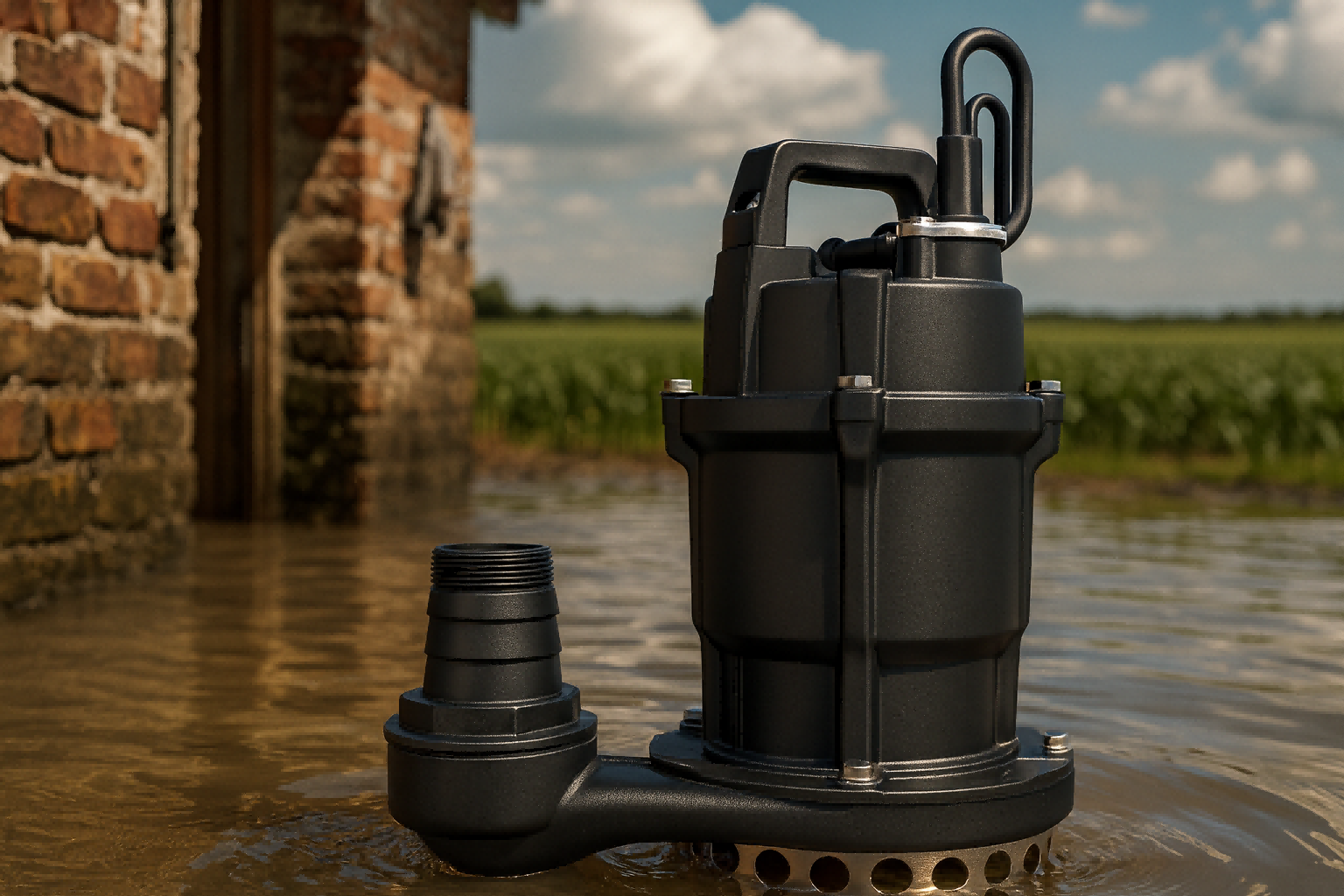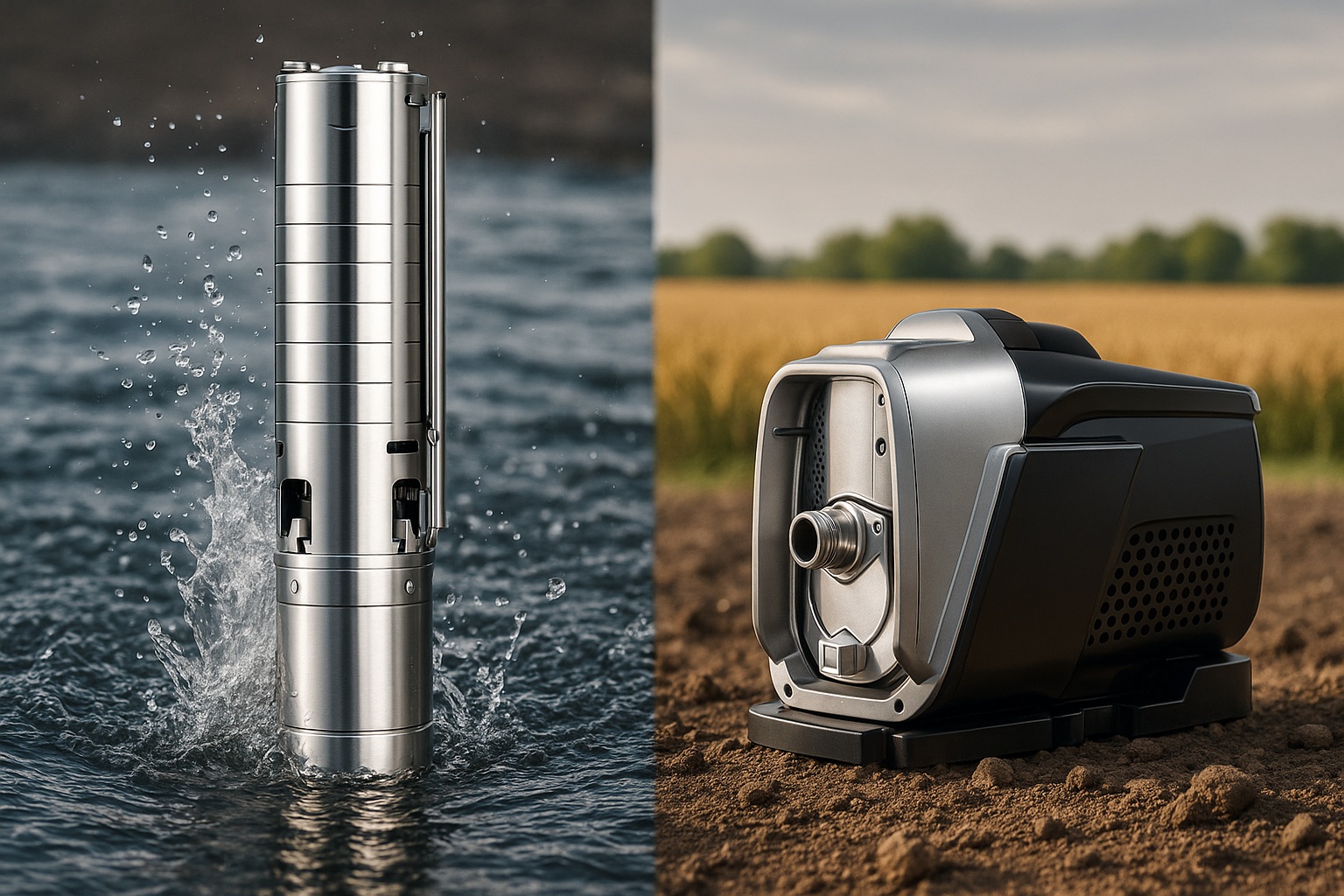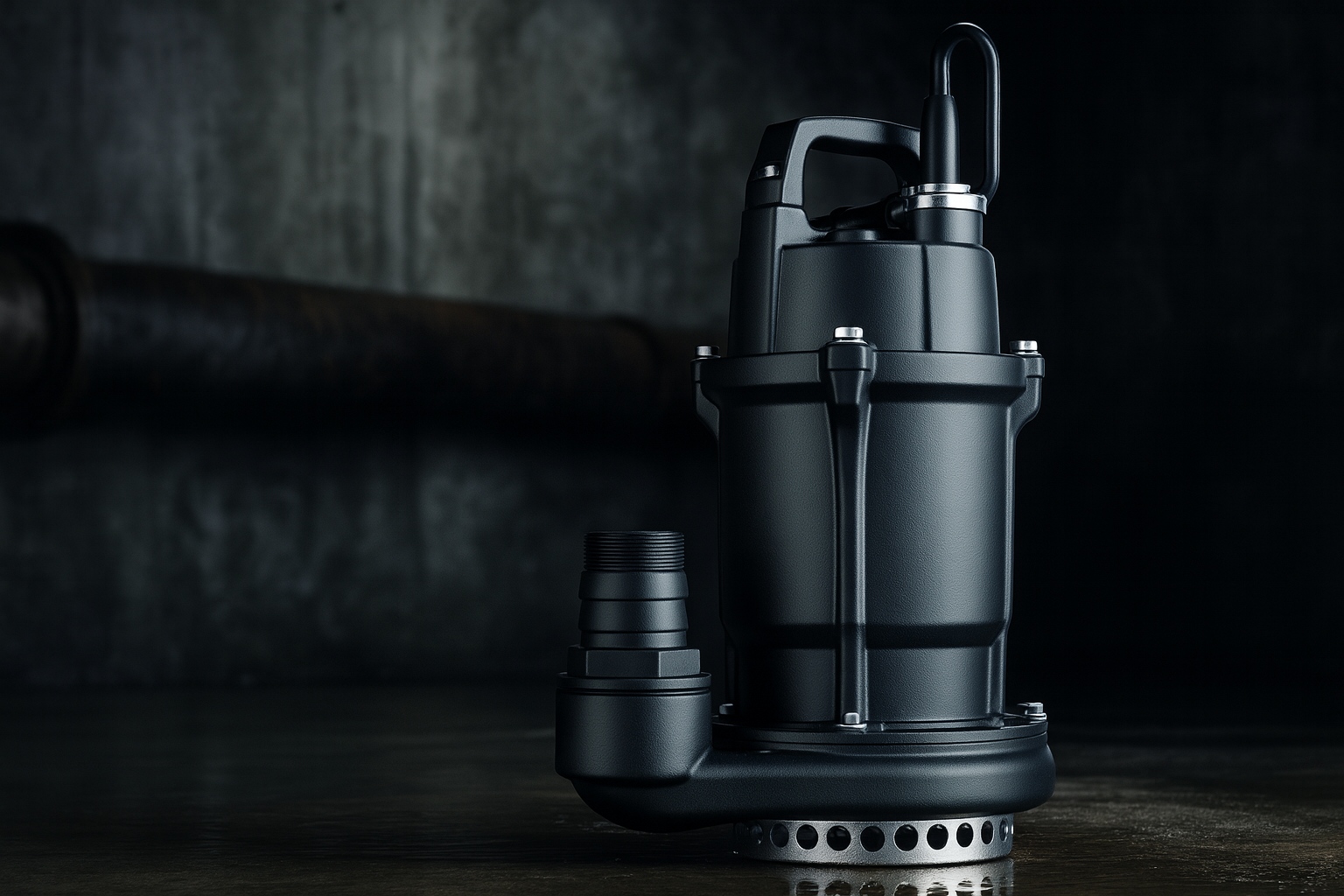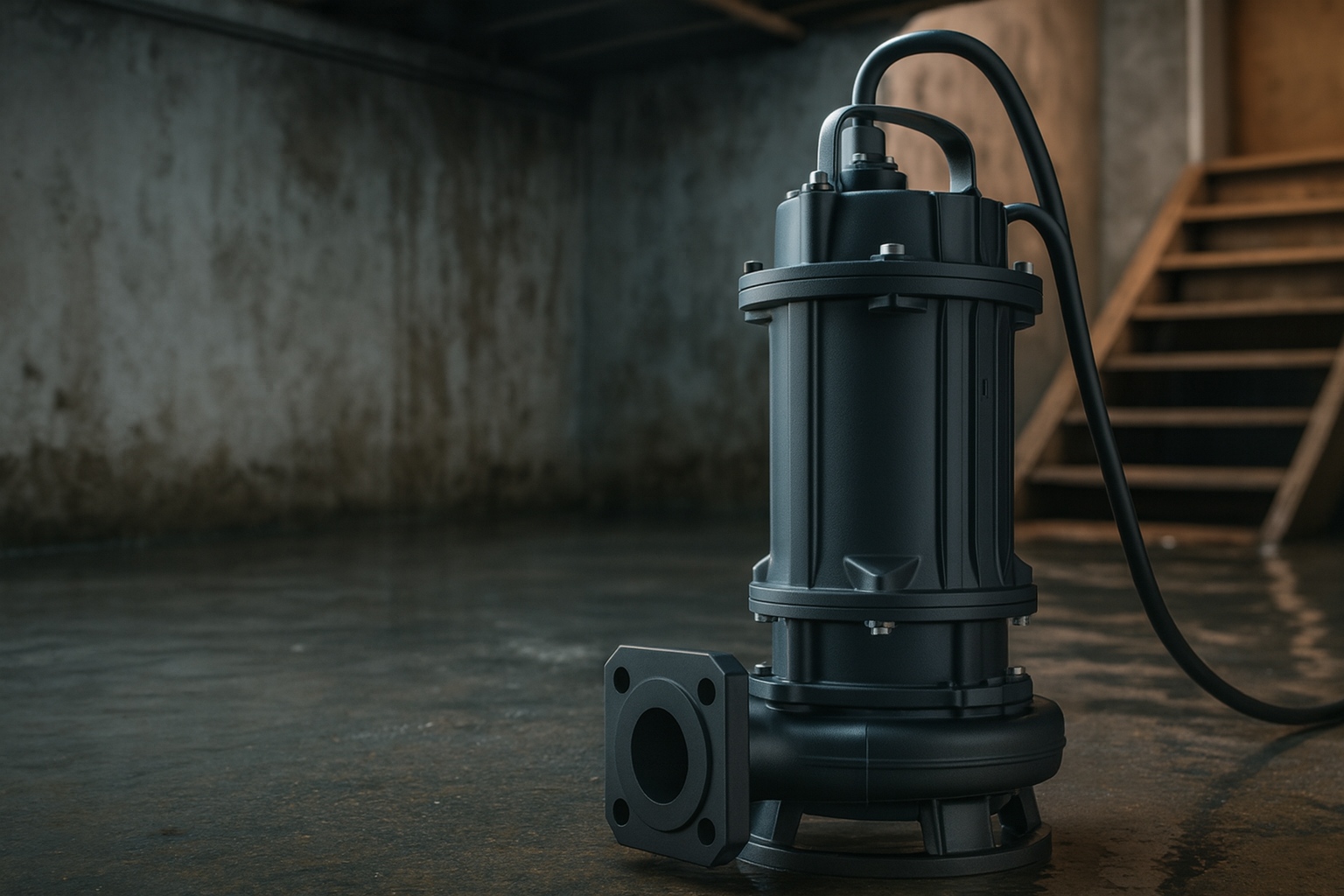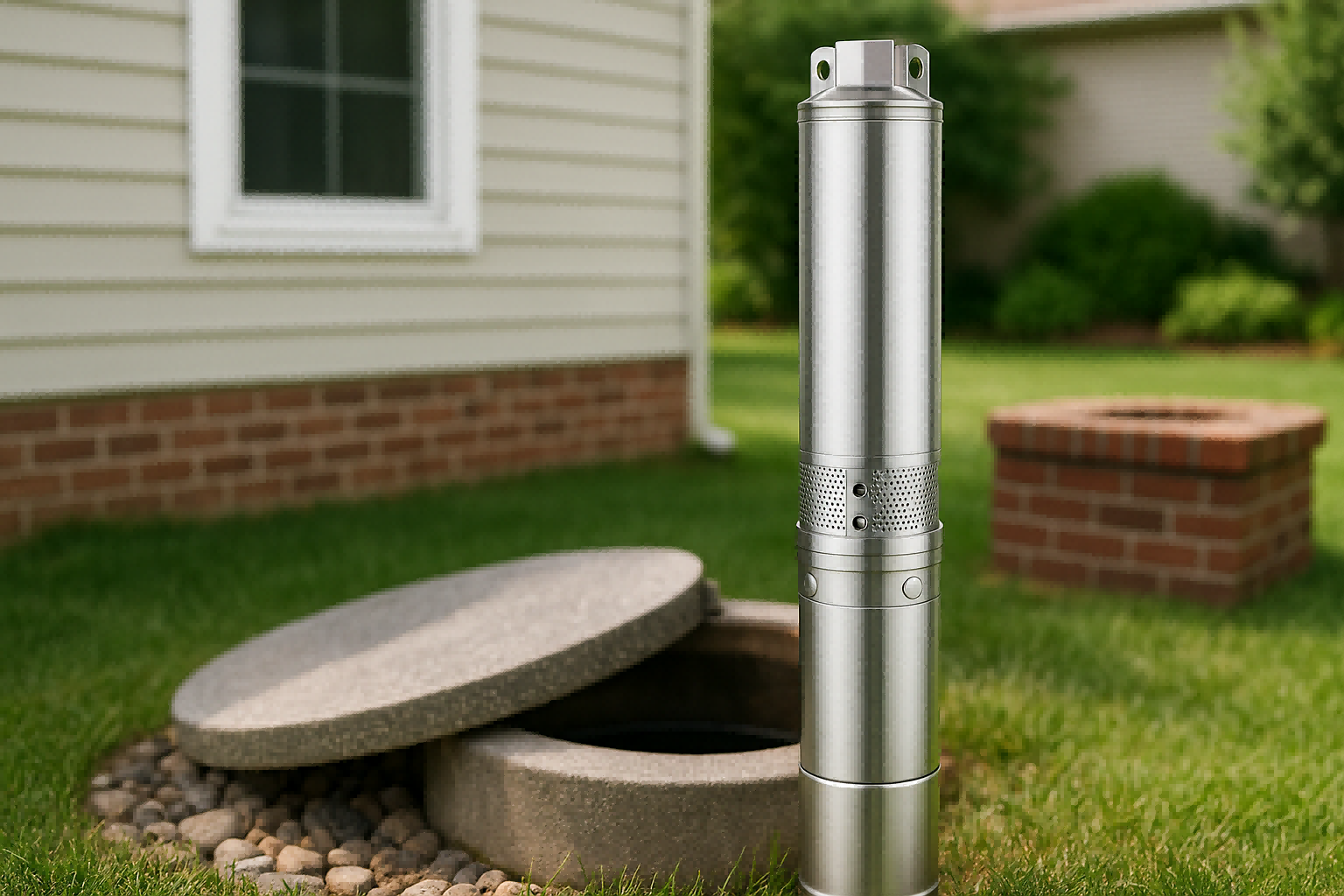Struggling with weak showers and trickling taps?
Low water pressure is a common frustration.
A booster pump offers a powerful solution.
For whole-property improvement, install the booster pump on the main water line, immediately after the water meter and main shutoff valve. For solving localized issues, such as a weak shower on an upper floor, install a smaller pump directly on the pipe feeding that specific fixture or appliance.
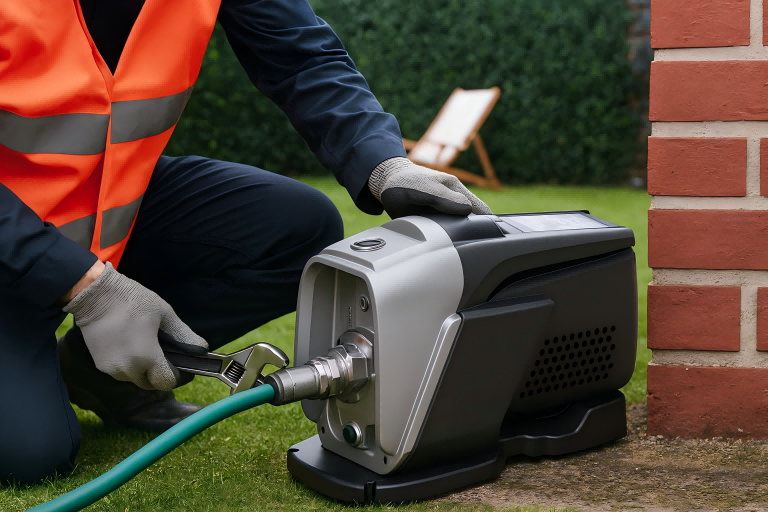
Choosing the correct installation point is the most critical decision for maximizing your pump's effectiveness and ensuring the long-term health of your plumbing system.
The right location depends entirely on the nature of your water pressure problem.
Is it a whole-house issue, or is it confined to a single area?
Answering this question is the first step.
This guide will walk you through the strategic placement options, outlining the benefits and technical considerations for each.
We will explore how to make the right choice to achieve consistent, high-pressure water flow throughout your property.
Installing on the Main Water Line for Whole-Property Boosting
Is every faucet in your building delivering a disappointing flow?
A single, well-placed pump can revitalize your entire water system.
This approach ensures a uniform uplift in pressure for every outlet.
Placing a booster pump on the main incoming water supply is the most comprehensive solution. It addresses widespread low pressure by boosting all water entering the property, making it ideal for residential homes, multi-story buildings, and commercial facilities experiencing systemic pressure loss.
This centralized installation strategy is the standard for a reason.
It offers a simple, powerful, and effective fix for a problem that affects an entire building.
By treating the water at the source, you guarantee that from the basement laundry to the top-floor shower, the pressure is strong and reliable.
Why This Location is the Standard
Installing the pump on the main line provides a universal solution.
Every plumbing fixture and appliance connected to your system receives the immediate benefit of increased pressure.
This is especially critical in multi-story residential and commercial buildings where gravity naturally reduces water pressure on higher floors.
A single, robust pump on the main line can overcome this challenge efficiently.
It simplifies the system, avoiding the need for multiple smaller pumps scattered throughout the property.
Planning the Installation Point
Proper placement on the main line is crucial for function and future maintenance.
- Locate the Main Shutoff Valve and Water Meter: Your pump must be installed after these components. This allows you to shut off the water supply for installation and service.
- Choose an Accessible Space: The pump and its controller will need service one day. Ensure there is enough physical space around the unit to perform maintenance without difficulty.
- Ensure Electrical Access: The pump requires a dedicated power source. The location should be close to where a proper electrical circuit can be installed by a qualified electrician.
The Critical Role of a Bypass Loop
A bypass loop is a secondary pipe arrangement that runs parallel to the pump.
It includes a set of valves that allow you to direct water flow around the pump instead of through it.
This feature is indispensable for maintenance.
If the pump needs to be repaired or replaced, you can activate the bypass.
This restores water to your property—at the original low pressure—while the pump is offline, preventing a complete water outage.
How Modern Pumps Protect Your Entire System
A modern variable frequency drive (VFD) pump is more than just a motor.
It's an intelligent device designed to protect your plumbing.
A key feature is the "soft start and soft stop" function.
This technology gradually ramps the motor's speed up and down.
This eliminates the sudden surge of pressure known as water hammer, which can stress pipe joints and fixtures over time.
Furthermore, advanced models operate at extremely low noise levels, often under 50dB, ensuring they don't create a disturbance.
Some even include sophisticated pipeline leak detection, alerting you to potential issues within your plumbing that could otherwise go unnoticed.
| Pros and Cons of Main Line Installation | Description |
|---|---|
| Pros | Whole-Property Solution: Boosts pressure to every outlet and appliance uniformly. |
| System Simplicity: One installation point manages the entire building's needs. | |
| Cost-Effective for Widespread Issues: More economical than installing multiple small pumps. | |
| Cons | Higher Initial Pump Cost: Requires a more powerful pump to service the entire property. |
| Professional Installation Required: Involves cutting the main pipe and complex electrical work. | |
| System-Wide Pressure: You must ensure all existing pipes and fixtures can safely handle the increased pressure. |
Targeted Installation for Specific Appliances
Is your only problem a tankless water heater that won't ignite?
Or perhaps just one shower has frustratingly low pressure?
A targeted installation is a precise and economical fix.
For localized low-pressure problems, you can install a smaller booster pump directly on the feed line to a specific appliance or fixture. This is an efficient solution for devices like tankless water heaters, high-demand showers, or irrigation systems that have unique pressure requirements.
This approach is surgical.
Instead of pressurizing your entire plumbing network, you focus power exactly where it's needed most.
This not only solves the immediate problem but also avoids putting unnecessary stress on older pipes in other parts of the building.
It's a smart strategy for homes with isolated pressure issues, saving you money on both the equipment and the installation.
Common Scenarios for Targeted Boosting
Certain appliances are notorious for needing specific water pressure to function correctly.
- Tankless Water Heaters: Many models have a minimum flow rate sensor. If the water pressure is too low, the sensor won't activate the heating element. A small booster on the cold water inlet guarantees consistent hot water.
- Upper-Floor Showers: Gravity is a constant enemy of water pressure. A bathroom on the second or third floor may have significantly lower pressure. A dedicated pump for that shower can provide a much better experience.
- Irrigation Systems: Sprinkler heads require substantial pressure to operate effectively and cover a wide area. A booster pump is often essential for a lawn or garden irrigation setup.
Installation Best Practices for Fixtures
When installing for a single appliance, precision is key.
The pump should be installed on the pipe just before the appliance's water inlet.
It's crucial to install non-return valves, also known as check valves.
These devices prevent the high-pressure water from flowing backward into the rest of your plumbing system, which could cause pressure imbalances between your hot and cold lines.
Choosing the Right Pump for a Specific Job
A smaller pump is usually sufficient for a targeted application.
However, the pump's specifications must match the task.
If you are boosting a hot water line or installing a pump for a hot water circulation system, you need a unit specifically rated to handle high temperatures, often up to 75°C (167°F).
Additionally, many of these pumps work best when paired with a small pressure tank (typically 1.5 to 5 liters).
This tank acts as a buffer, reducing how often the pump needs to switch on and off for small water draws, which significantly extends the motor's lifespan.
Critical Steps for Wiring and Safety
A pump's performance is deeply tied to its electrical supply.
Improper wiring is not just ineffective; it is a serious safety hazard.
Getting the electrical connection right is non-negotiable.
Always connect a water booster pump to a dedicated circuit with its own breaker. The controller box must be mounted in a location protected from direct sunlight and moisture. For your safety and to comply with regulations, all electrical work must be performed by a licensed electrician.
The power behind your water pressure originates from this electrical connection.
Any mistakes here can lead to pump failure, electrical shorts, or even fire.
Adhering to strict safety protocols and local electrical codes is the only way to ensure a reliable and secure installation that will last for years.
Protecting the Electronic Brain
The controller box is the pump's central nervous system.
It houses sensitive electronics that must be protected from the elements.
Mount it securely to a wall in a dry, ventilated area.
While standard procedure dictates keeping it away from moisture, many premium pumps now feature a controller with a fully sealed and potted printed circuit board (PCB).
This design achieves an IP67 waterproof rating, making the electronics impervious to dust and condensation.
This feature dramatically extends the controller's lifespan by protecting it from the humid environments where pumps are often installed.
Following Local Electrical Codes is Mandatory
Every region has specific codes governing electrical installations.
These rules dictate the appropriate type of wire, whether it needs to be run in a conduit, and the requirements for grounding.
There is no room for compromise here.
Failure to follow code can invalidate your homeowner's insurance and pose a significant safety risk.
Always hire a licensed professional who understands the local requirements.
The Basic Wiring Sequence
While a professional should perform the work, understanding the process is helpful.
- Power Off: The first step is always to turn off the main power at the breaker box.
- Connect Wires: The electrician will connect the power supply wires to the pressure switch and the controller box according to the manufacturer's wiring diagram.
- Secure Ground Wire: The ground wire is a critical safety feature and must be securely connected to the designated ground screw.
- Final Connection: The pump itself is then connected to the controller box.
- Test: Only after all connections are double-checked is the power turned back on to test the system.
Advanced Electrical Self-Protection
Modern intelligent pumps come equipped with a host of self-preservation features.
These systems constantly monitor the electrical supply and internal conditions.
They can automatically protect themselves from:
- Voltage Fluctuations: Many can operate flawlessly on a wide voltage range (e.g., 165V to 260V), perfect for areas with unstable power grids.
- Overcurrent and Stall: The pump will shut down if it detects a dangerous electrical current or if the motor is stalled, preventing burnout.
- Overheating: Sensors monitor the temperature of the controller and the motor, shutting the unit off to cool down if it gets too hot.
Beyond Installation: Sizing and System Checks
Putting a pump in the right place is just one part of the equation.
If the pump is the wrong size, it won't solve your problem.
If your pipes are clogged, no pump can help.
Before purchasing a pump, perform two crucial checks. First, calculate your property's peak water flow rate and pressure requirements to size the pump correctly. Second, inspect your plumbing system for any pre-existing issues like leaks, corrosion, or blockages that could be the real cause of low pressure.
Think of this as a diagnosis before the prescription.
A booster pump is a powerful tool, but it is not a magic wand.
It is designed to boost pressure in a healthy plumbing system.
Applying high pressure to a system with underlying faults can create bigger, more expensive problems.
A few simple checks beforehand will ensure your investment is both effective and wise.
How to Determine Your Pumping Needs
Sizing a pump correctly involves understanding flow and pressure.
- Calculate Flow Rate: The flow rate is the volume of water needed, typically measured in gallons per minute (GPM) or liters per minute (LPM). To estimate your peak demand, add up the typical flow rates of all fixtures that might be used simultaneously (e.g., two showers + one faucet + toilet).
- Determine Required Pressure: Pressure is the force of the water, measured in pounds per square inch (PSI) or bar. Most household fixtures work well between 40-50 PSI. It is important to note that pressure exceeding 60-70 PSI can accelerate wear on your pipes and appliances.
Modern VFD pumps offer a significant advantage here, as they allow you to set a precise, constant outlet pressure, ensuring you get exactly what you need without over-pressurizing the system.
Conduct a Plumbing Health Check
Before you install a pump, play detective with your existing plumbing.
- Check for Clogs: If low pressure is isolated to a single faucet, the problem is likely a clogged aerator or pipe, not systemic pressure loss.
- Inspect for Leaks: A hidden leak is a common cause of pressure drop. Look for unexplained damp spots, listen for running water when all taps are off, and check your water meter for movement.
- Evaluate Pipe Size: In older homes, the pipes themselves may be too narrow to allow for adequate water flow, acting as a bottleneck that a pump cannot fully resolve.
Using Smart Pumps for System Monitoring
The most advanced booster pumps provide more than just pressure.
They offer a window into your water system's health.
Many feature a digital display that can cycle through critical real-time data points, such as:
- Live Power Consumption: See exactly how much energy the pump is using.
- Motor Speed (RPM): Understand how hard the pump is working to maintain pressure.
- Voltage Input: Confirm your power supply is stable.
- Controller Temperature: Monitor the health of the electronics.
This diagnostic information allows you to monitor performance and spot potential issues long before they become serious problems.
Conclusion
Correctly installing a water booster pump transforms your water supply.
Place it on the main line for whole-house improvement or target a specific appliance for a localized fix.
Proper sizing and pre-installation checks are essential for success.
Frequently Asked Questions (FAQs)
Where should a booster pump be placed?
For whole-house pressure, install it on the main water line after the meter. To fix a specific fixture, place it on the pipe directly feeding that appliance.
Can I install a booster pump myself?
DIY installation is possible for those with advanced plumbing skills. However, all electrical work must be performed by a licensed electrician to ensure safety and code compliance.
Do I need a booster pump on both hot and cold water?
If both lines have low pressure, installing one pump on the main line is the best solution. Boosting only the hot or cold line can create pressure imbalances.
Should a pump be installed before or after a water heater?
Always install a booster pump on the cold water inlet line leading into the water heater, never on the hot water outlet.
Does a booster pump increase water bills?
It can slightly increase your electricity bill. However, modern VFD pumps are highly energy-efficient, often saving up to 50% compared to older, fixed-speed models.
How do I know what size booster pump I need?
You need to calculate your peak demand flow rate by adding up all fixtures that may run at once and determine the pressure (PSI) needed for your home.
Can a booster pump be too powerful?
Yes. Water pressure exceeding 70 PSI can cause damage to your pipes, joints, and appliances. It's crucial to select a properly sized pump.
What is a bypass on a booster pump?
A bypass is a parallel pipe arrangement with valves. It allows you to direct water around the pump so you still have water access during maintenance or repair.


